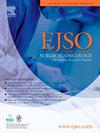The LyBra score: A risk assessment tool to address targeted prevention against breast cancer – Related lymphedema
IF 3.5
2区 医学
Q2 ONCOLOGY
引用次数: 0
Abstract
Introduction
Nowadays, physicians have tools to prevent breast cancer-related lymphedema (BCRL) but there is no consensus on when to apply them. The authors analysed patient- and treatment-related risk factors to create the LyBra score, to identify patients that may benefit the most from BCRL preventive interventions.
Materials and methods
Patients were selected from cases of breast cancer treated from January 2019 to July 2022. Inclusion criteria were age above 18, breast cancer diagnosis and surgical treatment with lymph-node biopsy or axillary dissection. Recurrent cancers, inflammatory cancer, previous axillary surgery, bilateral cases and patients with primary lymphedema were excluded. Selected cases were assessed with the LyBra Score. Numerosity and distribution of expected BCRL were compared to the BCRL registered during the minimum follow-up of 2 years.
Results
During an average 41 months follow-up (range, 24–62), 131 cases (14 %) of BCRL were registered in the total 933 patients included in the study. According to LyBra score, expected BCRL cases were 149 (16 %), slightly higher but with no statistical significance. The major incidence of BCRL (40 cases in 47 patients) was registered in the high-risk group that included 5 % of the study population. A ROC curve was used to determine the diagnostic performance of the LyBra score and the AUC was 0.78 corresponding to a good discriminating ability.
Conclusion
By sorting patients into risk groups, the LyBra score offers a solution to the actual dilemma of timing and indication of the modern preventive-BCRL microsurgeries.
天秤座评分:一个风险评估工具,以解决针对性预防乳腺癌相关淋巴水肿
如今,医生们有预防乳腺癌相关淋巴水肿(BCRL)的工具,但在何时应用这些工具方面尚无共识。作者分析了患者和治疗相关的风险因素,以创建LyBra评分,以确定可能从BCRL预防干预中获益最多的患者。材料和方法患者选择于2019年1月至2022年7月接受治疗的乳腺癌患者。纳入标准为年龄在18岁以上,乳腺癌诊断和手术治疗并进行淋巴结活检或腋窝清扫。排除复发性癌症、炎性癌症、既往腋窝手术、双侧病例和原发性淋巴水肿患者。选定的病例用天秤座评分进行评估。将预期BCRL的数量和分布与最少随访2年期间登记的BCRL进行比较。结果在平均41个月的随访期间(范围24-62),933例患者中有131例(14%)登记BCRL。根据LyBra评分,预期BCRL病例为149例(16%),略高,但无统计学意义。BCRL的主要发病率(47例患者中40例)记录在高危组,占研究人群的5%。采用ROC曲线确定LyBra评分的诊断效能,AUC为0.78,判别能力较好。结论LyBra评分通过对患者进行风险分组,解决了现代预防性bcrl显微手术时机和适应证的实际困境。
本文章由计算机程序翻译,如有差异,请以英文原文为准。
求助全文
约1分钟内获得全文
求助全文
来源期刊

Ejso
医学-外科
CiteScore
6.40
自引率
2.60%
发文量
1148
审稿时长
41 days
期刊介绍:
JSO - European Journal of Surgical Oncology ("the Journal of Cancer Surgery") is the Official Journal of the European Society of Surgical Oncology and BASO ~ the Association for Cancer Surgery.
The EJSO aims to advance surgical oncology research and practice through the publication of original research articles, review articles, editorials, debates and correspondence.
 求助内容:
求助内容: 应助结果提醒方式:
应助结果提醒方式:


